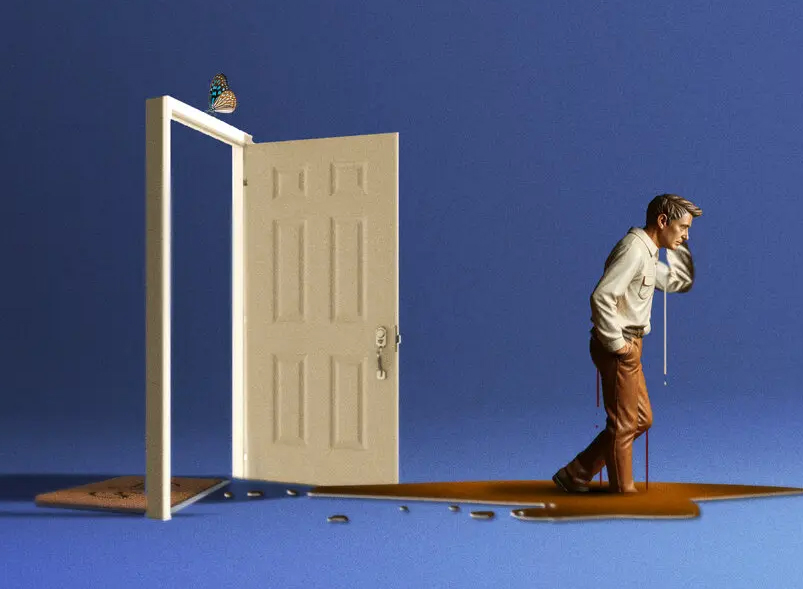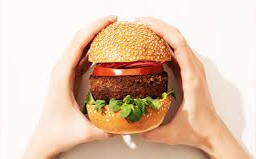There are many factors that contribute to poor oral health, including bad habits such as nail biting, smoking, and using your teeth to open bottles. Here is a list of ten common habits that could wreak havoc on your teeth.
- Nail Biting
This nervous habit can chip teeth and impact the jaw, as well as expose your mouth to the bacteria under your nails. To reduce nail biting, paint your nails with bitter nail polish or practice stress management techniques (e.g. medication and exercise). - Using Teeth As Tools
When you use your teeth for something other than what they are designed for, such as using your teeth to open a bottle or to cut off a price tag, you run the risk of accidentally cracking your teeth or injuring your jaw. Keep real tools handy, like a bottle opener and scissors, so you are not tempted to use your teeth. - Chewing Ice Cubes
The rigidity and cold temperature of ice can cause teeth to fracture and cause damage to fillings and other dental restorations. To avoid this habit, drink through a straw or drink chilled beverages without ice. - Frequent Snacking
When you eat, cavity-forming bacteria feasts on leftover food particles in your mouth and then produces acid, which erodes your enamel and leads to decay. Instead of frequent snacking, eat balanced, protein-rich meals and drink plenty of water to wash away leftover food particles. - Biting and Chewing Foreign Objects
Most of us have chewed on the tip of a pencil or eyeglasses when concentrating on a difficult task. This puts a lot of pressure on the teeth and could cause teeth to crack or shift. Those objects can also carry germs that can lead to infection in the mouth. Instead of chewing inanimate objects, chew sugar-free gum or veggies to keep your mouth occupied. - Thumb Sucking
Kids, who engage in thumb sucking after their permanent teeth have developed (around age 5-6), run the risk of permanently altering their tooth and jaw structure. Keeping your children’s hands busy is one way to help wean them off of their thumbs so their teeth develop normally. - Teeth Grinding
Teeth grinding (or bruxism) can happen during the day or while you sleep and is usually caused by stress and anxiety. Teeth grinding can wear down your teeth and expose them to decay. Talk to your doctor about a mouth guard, therapeutic Botox, or practice stress-reducing exercises - Brushing Too Hard
Aggressively brushing your teeth can irritate the gums, cause gums to recede, erode tooth enamel, and lead to tooth sensitivity. To prevent brushing too hard, choose a toothbrush with soft bristles and make sure to replace your toothbrush every 3-4 months or when bristles show signs of wear. - Smoking
Smoking not only impacts your heart and lungs, but also damages your oral health. Smoking puts you at higher risk of gum disease, as well as causes tooth discoloration, bad breath, loss of taste, tooth decay, tooth loss, and oral cancer. Your dentist can work with you to mitigate the effects of smoking, but quitting is the best solution. - Heavy Drinking
Alcohol dries out the mouth, preventing saliva from washing away bacteria, causing bad breath and putting your teeth at greater risk of developing cavities. Furthermore, alcohol is acidic and; thus, wears away the enamel. Reduce your alcohol intake to no more than one drink a day for women and two drinks a day for men, or opt for carbonated sparkling water instead.
How to Avoid these bad Habit?
Breaking bad habits, especially ones that can affect your dental and overall health, requires a combination of awareness, self-discipline, and sometimes seeking professional help. Below are strategies for avoiding each of the habits you’ve listed:
- Nail Biting
Awareness: Keep your nails trimmed short to minimize the temptation.
Substitute: Keep your hands busy with stress-relieving activities, like fidget spinners, stress balls, or doodling.
Coating: Apply a bitter-tasting nail polish specifically designed to deter nail-biting.
Stress Management: Practice relaxation techniques such as deep breathing or meditation to reduce anxiety. - Using Teeth As Tools
Awareness: Remind yourself that your teeth are not designed for tasks like opening packages or bottles.
Convenience: Always keep scissors, bottle openers, or a utility knife on hand so you’re less tempted to use your teeth.
Positive Reinforcement: Celebrate when you use the correct tools instead of your teeth. - Chewing Ice Cubes
Hydration: Often, people chew ice because they’re thirsty. Try drinking more water throughout the day.
Substitute: Chew sugar-free gum or mints instead of ice.
Mindfulness: Be conscious of the damage chewing ice can do to your teeth (chips, cracks, and wear). - Frequent Snacking
Healthy Choices: Replace unhealthy snacks with healthier alternatives like fruits, veggies, or nuts.
Routine: Set regular meal times and try to avoid eating between them.
Mindfulness: Practice mindful eating. Pay attention to your hunger cues, and focus on eating well-balanced meals. - Biting and Chewing Foreign Objects
Awareness: Recognize when you’re engaging in this habit (e.g., chewing on pens, pencils, etc.) and immediately stop.
Substitute: Keep something to occupy your mouth like sugar-free gum, or even a toothpick if necessary.
Stress Relief: Many people chew on objects when stressed, so incorporating stress-relieving habits can help. - Thumb Sucking
Awareness: Acknowledge when you’re sucking your thumb, especially during moments of stress or tiredness.
Substitute: Try squeezing a stress ball or another object to keep your hands occupied.
Professional Help: If this is a persistent habit, you may want to consult a dentist or therapist for strategies to break it. - Teeth Grinding (Bruxism)
Night Guard: Use a custom night guard provided by your dentist to protect your teeth while you sleep.
Stress Management: Try relaxation techniques or meditation before bed to reduce stress.
Physical Therapy: Sometimes, jaw exercises or therapy from a dentist or physical therapist can help relax your jaw muscles. - Brushing Too Hard
Gentle Brushing: Use a soft-bristled toothbrush and apply gentle pressure when brushing.
Technique: Brush in small, circular motions instead of scrubbing vigorously.
Electric Toothbrush: An electric toothbrush can help you maintain consistent pressure while brushing. - Smoking
Nicotine Replacement: Consider using nicotine patches, gum, or lozenges to help manage cravings.
Support System: Seek support from a doctor or smoking cessation programs.
Identify Triggers: Recognize situations where you are most tempted to smoke, and work to avoid or manage those triggers.
Alternative Activities: Find healthy alternatives to smoking, like walking or chewing sugar-free gum. - Heavy Drinking
Set Limits: Establish clear guidelines for how much alcohol you plan to drink, and stick to them.
Find Alternatives: Try switching to non-alcoholic drinks or limit yourself to one drink during social occasions.
Seek Support: If alcohol is a recurring issue, talking to a professional or joining a support group can provide the help needed to break the cycle.
Healthy Habits: Engage in activities like exercise, hobbies, or spending time with loved ones to shift your focus away from drinking.
General Tips for Breaking Bad Habits:
Self-Awareness: Recognize when you’re engaging in a bad habit and why—whether it’s out of boredom, stress, or anxiety.
Positive Reinforcement: Celebrate small victories and reward yourself when you successfully avoid a bad habit.
Seek Professional Help: In cases where habits are particularly challenging to break (e.g., teeth grinding or smoking), consulting a dentist, therapist, or healthcare provider can be very helpful.
Be Patient: Breaking bad habits takes time. Be patient with yourself and recognize that setbacks are a natural part of the process
How to Clean Your Teeth the Right Way: A Step-by-Step Guide to Healthy Smiles

Maintaining a proper dental hygiene routine is essential for keeping your teeth and gums healthy, preventing tooth decay, and avoiding gum disease. Many people don’t realize that there’s a right way—and a wrong way—to clean their teeth. In this article, we’ll walk you through the proper techniques for brushing, flossing, and caring for your teeth so you can achieve a healthy, sparkling smile.
- Choose the Right Toothbrush
The first step in any successful dental routine is choosing the right toothbrush. Here’s what you should look for:
Soft Bristles: Opt for a toothbrush with soft bristles. Hard bristles can damage your gums and enamel, so soft bristles are the safest option for most people.
Size and Shape: Make sure the toothbrush fits comfortably in your hand and mouth. The head should be small enough to reach all areas of your mouth, including the back teeth.
Electric vs. Manual: Both manual and electric toothbrushes can be effective, but an electric toothbrush may help you clean more thoroughly with less effort. Choose one with a rotating or vibrating head for optimal results.
- Use Fluoride Toothpaste
Fluoride is a mineral that helps protect teeth from decay by strengthening enamel. Most modern toothpastes contain fluoride, which is essential for preventing cavities and maintaining healthy teeth. Look for toothpaste that has the American Dental Association (ADA) seal for reassurance that it meets the required standards. - Brush for the Right Amount of Time
One of the most common mistakes people make is brushing their teeth for too short a time. The recommended time for brushing is two minutes—enough to thoroughly clean all surfaces of your teeth.
Set a timer: If you’re unsure how long you’ve been brushing, consider using a timer or an electric toothbrush with a built-in timer that vibrates every 30 seconds to signal when it’s time to move to a different quadrant of your mouth.
Brush every surface: Be sure to brush all areas of your teeth, including the outer, inner, and chewing surfaces, as well as your tongue and the roof of your mouth to remove bacteria and freshen your breath.
- Master the Correct Brushing Technique
How you brush is just as important as how long you brush. Using the right technique ensures that you clean your teeth effectively without causing damage to your gums or enamel.
Step-by-Step Brushing Technique:
Position the Toothbrush: Hold your toothbrush at a 45-degree angle to your gums.
Use Gentle Pressure: Don’t press too hard. Apply gentle pressure to avoid damaging your gums or enamel.
Circular Motions: Use small, circular motions to brush your teeth, rather than scrubbing back and forth. This helps remove plaque without harming your gums.
Brush All Surfaces:
Outer surfaces: Brush the outside of each tooth, starting from the gumline and moving upward.
Inner surfaces: For the inner surfaces of your teeth, tilt the brush vertically and use gentle up-and-down strokes.
Chewing surfaces: Use short back-and-forth strokes to clean the chewing surfaces of your teeth.
Tongue: Don’t forget to brush your tongue to remove bacteria and freshen your breath.
- Don’t Forget to Floss
Brushing alone isn’t enough to remove all plaque and food particles. Flossing is an essential step in maintaining good oral hygiene because it helps clean between your teeth and along the gumline, areas that your toothbrush can’t reach.
How to Floss Properly:
Use about 18 inches of dental floss: Wrap the floss around your middle fingers, leaving a small section between them to work with.
Gently Insert the Floss: Slide the floss between your teeth with a sawing motion, being careful not to snap it into your gums.
Form a C-shape: Curve the floss around each tooth in a C-shape and gently slide it beneath the gumline to remove plaque and debris.
Move to a Clean Section: Use a clean section of floss for each tooth to avoid redistributing bacteria from one tooth to another.
- Use Mouthwash
While mouthwash is not a substitute for brushing and flossing, it can be a helpful addition to your routine. Mouthwash can help reduce bacteria, fight bad breath, and even help with gum disease or tooth decay.
Choose the Right Mouthwash: Look for a mouthwash that contains fluoride to help prevent cavities and protect your enamel. If you’re concerned about gum disease, consider a mouthwash that contains antibacterial agents like chlorhexidine.
Follow Instructions: Swish mouthwash around your mouth for 30 seconds to a minute, then spit it out. Don’t rinse your mouth with water afterward to allow the mouthwash to continue working.
- Replace Your Toothbrush Regularly
Even the best toothbrush won’t be effective if it’s too worn out. Replace your toothbrush every 3 to 4 months, or sooner if the bristles are frayed. A worn-out toothbrush will not clean your teeth as effectively and can be harder to maneuver around your mouth.
If you’ve been sick or had a cold, it’s a good idea to replace your toothbrush to avoid reintroducing bacteria into your mouth.
- Visit Your Dentist Regularly
No matter how diligent you are about brushing and flossing, regular dental checkups are a must. Dentists can catch problems early, such as cavities, gum disease, or even oral cancer, and provide professional cleaning to remove plaque and tartar that buildup can’t remove.
It’s generally recommended to see your dentist every 6 to 12 months, but follow your dentist’s recommendations based on your personal oral health.
- Other Tips for Healthy Teeth
Limit sugary foods and drinks: Sugar feeds bacteria in your mouth that can lead to cavities and tooth decay.
Drink plenty of water: Water helps wash away food particles and bacteria, and it can help prevent dry mouth, which can contribute to bad breath and cavities.
Consider fluoride treatments: If you’re at risk for cavities or enamel erosion, ask your dentist about fluoride treatments or using fluoride toothpaste.
Final Thoughts
Good oral hygiene is the foundation of a healthy mouth, and cleaning your teeth the right way is the key to maintaining that health. By following the proper brushing, flossing, and mouth care techniques, you can prevent cavities, gum disease, and bad breath. Don’t forget the importance of regular dental checkups and good lifestyle choices for overall dental health.


